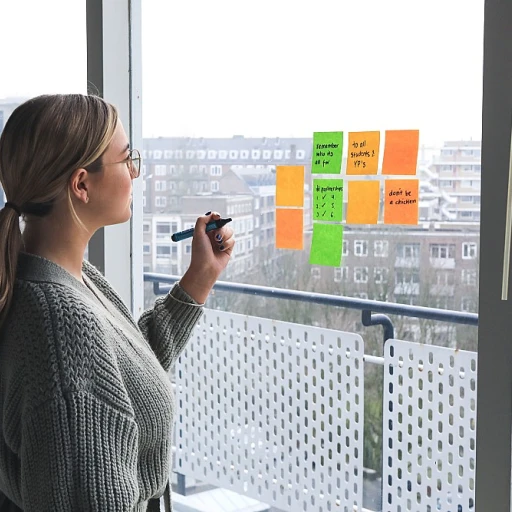
Understanding Employee Leave Management Software
Unraveling the Value of Leave Management Tools
Leave management software is designed to streamline the complex process of handling employee absences and ensure compliance with company policies. In essence, these tools aim to optimize the process from leave requests to time attendance. A user-friendly system often includes features like real-time tracking, allowing managers to see at a glance how many leave days have been taken across various leave types. This not only aids in absence management but ensures that team dynamics remain unaffected by unexpected disruptions. Such software also plays a crucial role in payroll management. By automating time-tracking and monitoring employee leave dates, it ensures precise calculations and prompt payroll processing. This aspect is essential, as accuracy in payroll boosts employee trust and workplace efficiency. Furthermore, these tools are not just about tracking leave. They go a step beyond by incorporating a compliance management system that aligns with both company leave policies and national regulations. By doing so, it alleviates any concerns about compliance breaches, especially during audits. Businesses looking to adopt these management systems can take advantage of a free trial offered by many vendors. This grants users the opportunity to experience the best features and see firsthand how well the app integrates with existing processes. For those aiming to refine their current system or seek the best leave management solution, effective planning will undoubtedly enhance efficiency. To explore this further, consider reading about optimizing your workload with effective planning.The Role of Employee Feedback in Leave Management
The Significance of Feedback in Managing Leave
In the realm of employee leave management, the role of feedback cannot be underestimated. Feedback from employees helps throughout the entire process—from requesting leave to ensuring there is a seamless return to work. However, understanding its true impact goes beyond mere absences; it affects the entire workflow and morale of a team. Employee feedback serves as the backbone of understanding how leave policies are perceived and where improvement is necessary. For organizations seeking to optimize their management systems, feedback provides critical insights into the effectiveness of the software features used for time tracking, leave types, and request handling. Here's why employee feedback is pivotal in leave management:- Transparency and Trust: Feedback fosters transparency within the team. When employees voice their opinions about the leave management system, whether it's through real-time app interfaces or free trial evaluations, they feel heard and valued.
- Policy Improvements: Continuous feedback enables organizations to adjust leave policies, ensuring they remain user-friendly and compliant with the latest regulations. This adaptability helps align the system with employee needs, improving the overall experience and efficiency.
- System Efficiency: Feedback highlights which features of the leave management software are the most effective or which might be redundant. This understanding can lead to refining the management system, enhancing user experience when managing time attendance and leave requests.
Challenges in Gathering Effective Employee Feedback
Challenges in Collecting Employee Insights for Improved Leave Management
Gathering meaningful employee feedback can be a complex task in the realm of leave management. A nuanced understanding of this process is essential for developing a robust management system. The intricacies lie in a few critical areas:- Overcoming Reluctance: Employees might be wary of providing honest feedback due to concerns over anonymity or potential repercussions. It's vital to foster a trusting environment where they feel safe expressing their views on leave management systems, including software features, app functionality, and policies.
- Ensuring Clarity: Feedback collection should clearly communicate the purpose and expected outcomes. Employees must understand how their inputs will improve processes, such as time tracking and payroll adjustments. This can help in refining absence management tools, enhancing user-friendly interfaces, and ensuring leave requests are processed with greater efficiency.
- Standardizing Processes: A consistent approach towards feedback gathering needs to be established. Implementing standardized questionnaires or open-ended surveys can pinpoint pain points in features like leave tracking and compliance with absence policies. Real-time data collection paired with systematic analysis is crucial for identifying the best practices in managing employee time.
- Encouraging Participation: Free trials and demos of new employee leave management software can be instrumental in breaking down barriers to feedback. Allowing employees to experience new absence management technologies firsthand may encourage them to share observations on the ease of use and any issues with time requests or tracking leave types and dates.
Leveraging Technology for Better Feedback Collection
Embracing Technology for Collecting Feedback
In the realm of employee leave and management, the role of technology cannot be overstated. Leveraging technology not only aids in tracking leave dates and understanding leave types but also plays a pivotal role in collecting employee feedback effectively. When it comes to managing time attendance, absence patterns, and payroll compliance, a user-friendly leave management system can make all the difference. With the rise of management software, organizations can not only streamline leave requests but also incorporate real-time feedback collection. This integration allows supervisors to quickly address issues, understand employee concerns, and adapt leave policies accordingly. Here are some key technological components enhancing feedback gathering:- Automated Feedback Features: Advanced leave management apps come with built-in capabilities for employees to provide feedback directly after submitting leave requests. This ensures that managers always have a pulse on employee satisfaction and any challenges faced during leave requests.
- Seamless Integration with Existing Systems: Modern management systems can integrate with other platforms to provide a comprehensive view of both absences and corresponding feedback. Such integration facilitates compliance with varied organizational policies and time tracking needs.
- Free Trial Options: Many software solutions offer free trials for companies to test how feedback mechanisms work within the platform. This way, organizations can ascertain if the tool provides the best leave management solutions alongside valuable insights through employee feedback.
- User-Friendly Interface: Ease of navigation is crucial for ensuring high participation rates in feedback collection. When the interface is intuitive, employees are more likely to engage, providing candid insights that can drive policy improvements.
Case Studies: Successful Implementation of Feedback-Driven Leave Management
Real-World Examples of Feedback-Driven Leave Management Success
Incorporating employee feedback into leave management systems has proven to be a game-changer for many organizations. By actively listening to employees and integrating their insights, companies have been able to streamline their leave management processes, enhance compliance, and improve overall employee satisfaction. Here are some real-world examples that highlight the successful implementation of feedback-driven leave management:
- Tech Firm's User-Friendly App: A leading tech company revamped its leave management software by incorporating direct feedback from its employees. They focused on creating a more user-friendly app that simplified leave requests and real-time tracking of leave dates. The result was a significant reduction in time spent on managing leave requests and improved employee time attendance.
- Manufacturing Company's Compliance Boost: A manufacturing giant faced challenges with compliance and absence management. By gathering employee feedback, they identified gaps in their leave policies and implemented a new management system that ensured better tracking of absences and adherence to leave policies. This not only improved compliance but also reduced unauthorized absences.
- Retail Chain's Enhanced Features: A major retail chain utilized employee feedback to enhance the features of their leave management software. They introduced a free trial period for new features, allowing employees to test and provide feedback. This iterative process led to the development of a robust system that efficiently managed leave types and integrated seamlessly with payroll systems.
- Healthcare Provider's Streamlined Processes: A healthcare provider faced challenges with time tracking and managing leave absence. By leveraging employee feedback, they were able to streamline their processes, resulting in a more efficient management system that reduced the administrative burden on HR teams and improved overall team morale.
These case studies demonstrate the tangible benefits of integrating employee feedback into leave management systems. By prioritizing the needs and insights of employees, organizations can create more effective and efficient management systems that not only meet compliance requirements but also enhance employee satisfaction and productivity.












